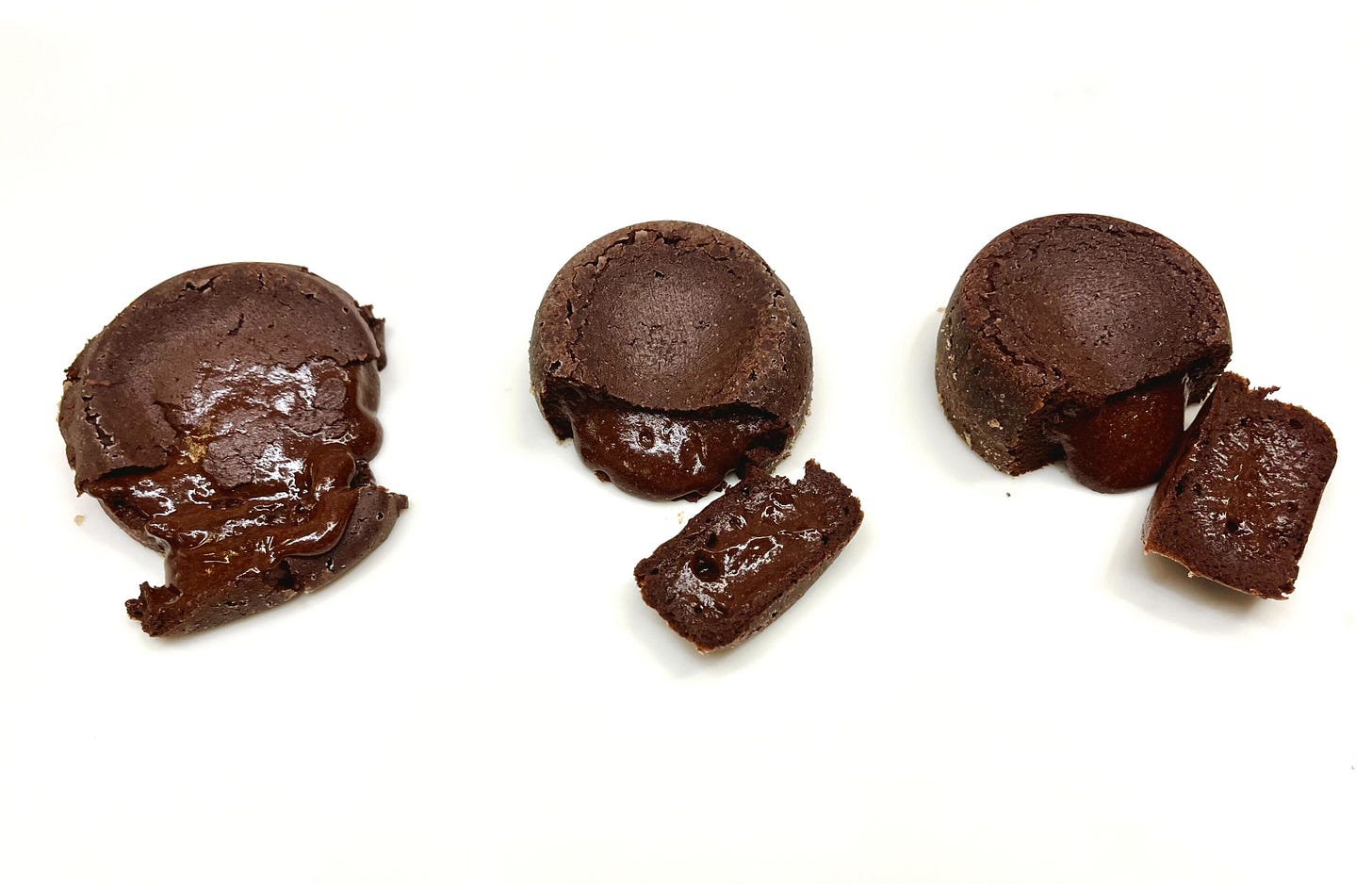A chocolatey experiment, perfect for Valentine's Day
Learn about heat transfer while making an incredible molten chocolate cake
So today is Valentine’s Day of course…did any of you attempt those Passionfruit Marshmallows from last week? How did it go? If you were a little too intimidated by the gelatin and the preparation of an Italian meringue, I get it. I have something else to share with you today that is much easier, and even better, you can get a little nerdy with it.
It’s a molten lava cake that doubles as a science experiment.
I’ve told you before about the course I started at George Washington University called The World on a Plate: How Food Shapes Civilization. We cover how food touches nearly everything: policy, national security, public health, culture. It was the basis of the new Global Food Institute at GW, which I told you about a few weeks ago.
Some years we have a class about food and science, a subject I obviously love. I’m not sure if you know this, but before I started the GW course, I was a guest lecturer in a course at Harvard called Science and Cooking. The course was created in 2011 by Michael Brenner and David Weitz, members of the Physics faculty at Harvard, and Pia Sörensen from the Engineering school. They are all absolutely brilliant, and had this idea to teach Harvard students about science through food. They brought some of the most incredible names in cooking to Cambridge to help them teach…Ferran Adrià, Carme Ruscalleda, Joan Roca, the former White House pastry chef Bill Yosses (they weren’t ALL Spanish!). I’ve been lucky enough to teach classes on Gelation and Spherification in the class, and even wrote an introduction to the book the professors published a few years ago.
When I first launched my class at GW, I asked Michael Brenner to come and teach my own students about food and science, and the lesson he taught was about heat transfer and phase transitions. When we cook or bake, heat changes the nature of food, interacting with its molecules and changing their phase: from solid to liquid to gas, or in reverse. Knowing the temperature that these transitions happen, and how heat is distributed within a food, is central to cooking.
So today’s recipe, for Molten Lava Cake, is a lesson in heat transfer—the cake starts as a liquid batter, and while it’s in the oven, water in the batter evaporates into steam, helping the cake rise, while the proteins in the eggs denature and the flour’s starches gelatinize, making the cake solid from the outside in as heat speeds up the batter’s molecules. You’ll make six molten lava cakes and take them out of the oven one minute apart to see how the cakes bake from the outside in—how heat changes the batter from liquid to solid. Each cake will be just a little more solid and less “molten” than the last…and you can see which one you prefer. (Steak works the same way, of course–if you like it rare, cook it less; if you like it well done, allow the heat to reach all the way to the center).
Or you could also just think about it as a delicious, simple, and Valentine’s Day-ready dessert…!
If you haven’t made Valentine’s day plans yet, now you have something to do!
Molten Lava Cakes
Makes 6 individual cakes



